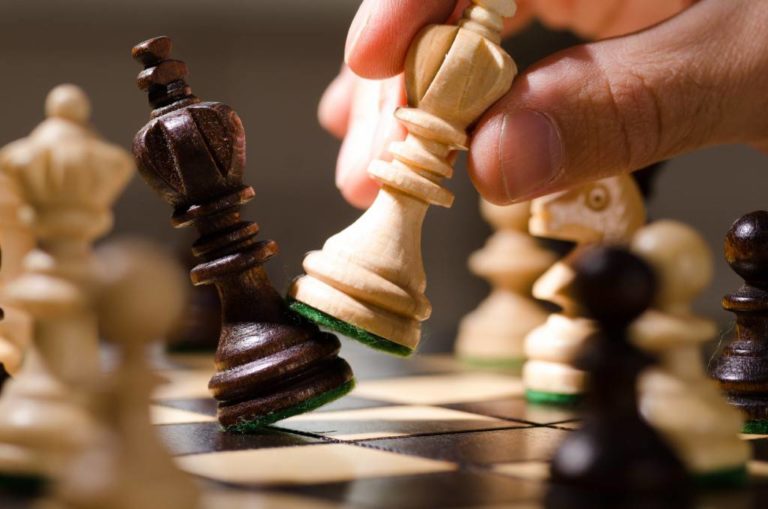We turned on the news this morning…
What we discovered was a very delighted young man, explaining why the economy is running red-hot.
The number of new job offers, he said, is greater than the number of new job applicants. This hasn’t happened for 10 years.
The number of people quitting jobs is also going up.
‘It shows people are feeling more confident about finding another job,’ he explained. This, too, hasn’t been the case since before 2007.
The National Federation of Independent Business released the results of its latest Small Business Optimism Index survey. The survey measures reported confidence in the economy among small business owners. Once again, that is back to levels not seen since 2006–2007.
The rate of business investment (CapEx spending), too, is back to 2007 levels.
Job growth…GDP growth…stock price growth…confidence growth — we haven’t seen anything like this, he gushed, since 2007.
Whew!
It made us wonder…What happened after 2007?
Dawnest before the dark
It’s always dawnest before the dark. Or something like that…
The sun shines bright…just before a hurricane sweeps across the bay. Today, as usual, we check the weather.
‘Of course, you never know about these things,’ said an Irish friend, with whom we raised a glass of Guinness last night. ‘But I think it’s time to buy gold. We Irish traditionally don’t like gold. We associate it with the Bank of England, which stuck to a gold standard as we starved. Of course, the gold standard had nothing to do with the famine, but I think a lot of Irish people make the connection anyway.’
‘We prefer land,’ he continued. ‘But gold is a better way to protect yourself against inflation. And I think inflation is about to pick up.’
According to the Bureau of Labor Statistics, prices in the US are rising at a rate of 2.9%.
That number is above the Fed’s current target lending rate — 2%. And it’s dead-even with the latest wage increase rate, too — also 2.9%.
Taken together, what we see is that prices are keeping pace with wages and leading the federal funds rate — the rate at which banks lend to each other.
There are three things that might drive inflation higher.
First, the tax cut leaves more money in more hands. As these hands get rid of it, we can expect upward pressure on prices.
Second, the feds are spending more money they don’t have. The budget deficit for August alone was more than $200 billion. This is money that was never taken from taxpayers (consumers), and so represents additional buying pressure.
Third, The Donald’s trade war is bound to cause prices to rise. Already targeted are $200 billion worth of low-priced Chinese exports. Another $267 billion will be attacked if China retaliates. This will increase prices on essentially all of the imports from the world’s largest and most efficient producer.
It is not hard to imagine that inflation will continue to rise…perhaps to the 4% range…dragging interest rates behind it…and bringing us back to what happened after 2007.
Classic mistake
In 2007, the Fed — making its classic Mistake #2 — raised its key lending rate to over 5%, which was enough to bring on the hurricane.
In just a few months, all the delightful news headlines passed into history. The Dow was cut in half…the US economy was in its worst recession since the 1930s…and the Fed was on to Mistake #3 (cutting rates in a panic).
Which, in turn, brings us back to gold.
The other thing the news reports of 2007 told us was that the ratio of the Dow to gold was around 20. That is, it took 20 ounces of gold to buy the Dow.
That was about the same ratio as 1929. And about the same as the major top in the late 1960s. By 1980, the ratio hit its all-time low of 1.
The ratio actually brushed 40 at the end of the 1990s — an all-time record. By 2007, it was at 20 again.
Each time the ratio rose above 20, it was like 2007 all over again — followed by a bear market on Wall Street…and recession/stagflation on Main Street. And as stock prices went down, gold went up.
The Dow-to-Gold ratio eventually fell under 7 in 2011.
What the ratio measures is the relationship of dreams to reality…of the future to the here-and-now…and of hope to raw experience.
Right now, it tells us that — as in 1929, 1968, 1999, and 2007 — the ratio is above 20, signalling that stocks are too pricey.
‘Bitcoin got so much press over the last few years, no one noticed gold,’ our Irish friend continued. ‘It has been forgotten, and the price has drifted down while other assets have gone through the roof.’
‘But gold is the only real, proven money. And when the next crisis comes, I suspect that people will turn to gold — as they always have in times of crisis. This could be another great buying opportunity. Time will tell.’
We wouldn’t presume to guess the future. But this is hurricane season on the East Coast. Reports from Baltimore tell us that the city is unclogging its drains and sharpening its chainsaws.
Hurricane Florence may be on the way…Or perhaps some other kind of storm.
Regards,
Bill Bonner
